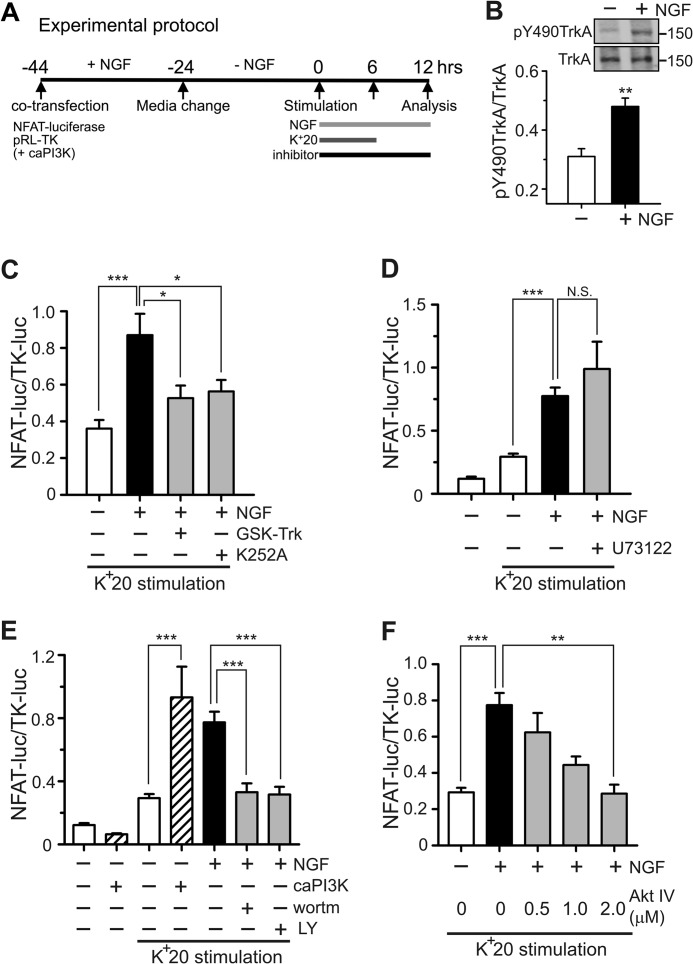FIGURE 4.
Facilitation of NFAT-dependent transcription by NGF requires activation of the PI3K-Akt signaling pathway. A, timeline describing the experimental protocol. Horizontal bars, treatments with 25 ng/ml NGF and K+20. BayK8644 (1 μm) was added to K+20 solution. All inhibitors were applied 30 min prior to stimulation with NGF/K+20. Dual-Luciferase assays were performed to quantify NFAT-dependent transcription (NFAT-luc/TK-luc). caPI3K is a construct that expresses a constitutively active form of PI3K; it was co-transfected with NFAT-luciferase and TK-luciferase in the experiments shown in E. B, Western blot analysis of TrkA phosphorylation at Tyr-490. DRG neurons were deprived of NGF for 24 h and subsequently treated with either vehicle control (−) or 25 ng/ml NGF (+) for 90 min (n = 5 experiments). A shorter time (compared with the 6 h commonly used) was chosen because TrkA phosphorylation is expected to be an early event in the studied signaling. C, effects of the TrkA inhibitor GSK-Trk (2 μm; n = 11 experiments) and tyrosine kinase inhibitor K252A (1–2 μm, n = 11 experiments) on NGF-dependent potentiation of NFAT-luciferase expression. D, the PLC inhibitor U73122 (1 μm; n = 5 experiments) had no effect on NGF-dependent potentiation of NFAT-luciferase expression. E, effects of the PI3K inhibitors wortmannin (wortm; 100 nm, n = 15 experiments) and LY294002 (LY; 25 μm, n = 15 experiments) as well as those of caPI3K (n = 6 experiments) on NGF-dependent potentiation of NFAT-luciferase expression in the presence or absence of K+20 stimulation. Both inhibitors blocked the NGF effects in DRG neurons. Conversely, caPI3K mimicked the NGF effect in the presence but not in the absence of K+20 stimulation. F, effects of the Akt inhibitor, Akt IV (0.5, 1, or 2 μm) on NGF-dependent potentiation of NFAT-luciferase expression. Akt IV blocked the NGF effect in a concentration-dependent manner (n = 3–8 experiments). *, p < 0.05; **, p < 0.01; ***, p < 0.001. Student's t test (B) and one-way ANOVA with Bonferroni's post hoc test (C-F) were used. N.S., not significant. All data are presented as mean ± S.E. (error bars).

